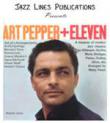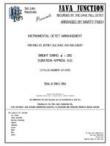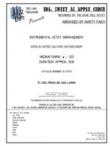MOONLIGHT ON THE GANGES
Recorded by Ella Fitzgerald
Arranged by Marty Paich, Prepared by Dylan Canterbury, Rob DuBoff, and Jeffrey Sultanof

Cat #: JLP-9612
$75.00This item usually ships within 1 business day.
Questions?
Please call +1-518-587-1102 or email us.
Edition: Jazz Little Big Band Arrangement with Vocal
Description: Swing - Medium
Publisher: Jazz Lines Publications
Although Marty Paich's arrangement of "Moonlight On The Ganges" (written for the 1958 Ella Fitzgerald album "Ella Swings Lightly") starts off in a conventional manner, the multiple tempo shifts over the course of the chart provide enough variation to keep the listener guessing throughout.
The ensemble kicks things off with a riff that descends in both harmony and dynamics to set up the vocalist's entrance at measure 7. The various background figures tend to be on the simplistic side, perhaps to avoid over-complicating what is already a moderately complicated melody. The vocal is followed by a single chorus of muted trumpet solo (performed on the original recording by the perennially underrated Don Fagerquist) that features some re-used background figures.
The first tempo shift occurs at the end of the trumpet solo at measure 69. There is a two bar drum fill that serves to set up the new not-quite-double-time tempo, followed by a recap of the initial descending ensemble figure before the vocals return at measure 75. The faster tempo naturally lends itself to an overall slight increase in volume in the ensemble.
The final tempo shift, a half-time drop off, occurs at measure 103. A drum fill and trumpet call sets up the final ensemble riff, featuring an ascending and descending harmonic line and an overall heavier feel. The arrangement comes to an appropriately cut-off conclusion with the horns sliding into the final ensemble hits.
This arrangement is written for little big band including horn in F and tuba. However, alternate parts are included in the event that you don't have access to a horn player. These parts are either trumpet 3 or trombone 2. The key is Ab and there are no saxophone doubles. This publication has been prepared from the original set of parts used during the recording session - this is not a transcription.
Vocal
Alto Saxophone
Tenor Saxophone
Baritone Saxophone
2 Trumpets
Horn in F (or Trumpet 3 or Trombone 2)
Trombone
Tuba (or Bass Trombone)
Guitar
Piano
Bass
Drums
Trumpet 1: Eb6
Trombone: F4










